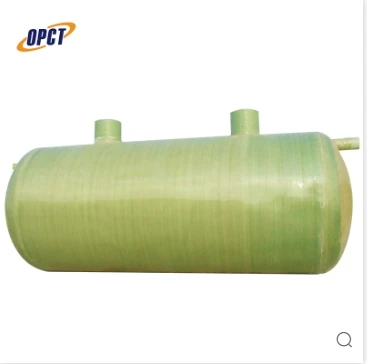


Understanding Fiberglass Pipe Prices A Comprehensive Guide
Fiberglass pipes have gained significant traction in various industries due to their durability, corrosion resistance, and lightweight properties. Their unique composition—composed of glass fibers reinforced with resin—provides a multitude of advantages over traditional materials like steel and PVC. However, understanding fiberglass pipe prices can be quite challenging for procurement officers, engineers, and construction managers alike. In this article, we will explore the factors influencing the pricing of fiberglass pipes, their advantages, and how to make cost-effective purchases.
Factors Influencing Fiberglass Pipe Prices
1. Material Composition The primary materials used in the production of fiberglass pipes significantly impact pricing. High-quality glass fibers and resin types can increase costs but also enhance the durability and performance of the pipes. Lower-quality materials might reduce initial costs but can lead to higher maintenance or replacement expenses in the long run.
2. Pipe Diameter and Length Generally, larger diameter pipes and longer spans tend to be more expensive. This is due to the increased material usage and the more complex manufacturing processes involved. Understanding the specific requirements for your project, including diameter and length, can help in estimating the total cost more accurately.
3. Manufacturing Processes Different manufacturing techniques, such as filament winding or hand lay-up, can affect the final price. Filament winding, which provides better fiber orientation and strength, is typically more expensive due to its advanced technology, while hand lay-up may be more cost-effective but might compromise on quality and longevity.
4. Market Demand and Supply Chain Fluctuations As with any commodity, fiberglass pipe prices are influenced by market demand and supply chain capabilities. Material shortages or increased demand in certain sectors can drive prices up. It's crucial to stay updated on market trends to forecast potential price changes.
5. Region and Shipping Costs Prices can vary significantly based on geographic location. Proximity to manufacturing facilities can reduce shipping costs, but local market conditions can also play a role in pricing. Additionally, international tariffs and trade agreements may impact costs for imported pipes. Always factor in shipping and handling fees when budgeting for fiberglass pipe purchases.
6. Customization and Additional Features Tailored solutions such as specialized coatings, specific thickness requirements, or unique fittings can increase the base price of fiberglass pipes. While these features might represent upfront costs, they could also lead to better performance and reduced maintenance in the long term.
The Advantages of Fiberglass Pipes

Despite their varied pricing, the benefits of fiberglass pipes often justify the investment. Here are some compelling reasons why you might consider using them for your next project
- Corrosion Resistance Fiberglass pipes are ideal for environments with aggressive chemicals or corrosive materials, as they do not rust or degrade easily. - Lightweight Construction This attribute simplifies installation and reduces labor costs. Moreover, lighter pipes can help minimize the structural load on supporting structures. - Longevity and Durability Tougher than many traditional materials, fiberglass pipes have a long lifespan, often exceeding 30 years with proper care and maintenance. - Low Maintenance Their resistance to chemical and environmental factors reduces the need for frequent repairs, offering long-term savings.
Making Cost-Effective Purchases
To ensure you get the best value for your fiberglass pipe investment, consider the following strategies
1. Conduct Market Research Regularly monitor market trends and pricing to make informed purchasing decisions. Understanding when to buy can significantly affect overall costs.
2. Volume Discounts If your project requires a large quantity of pipes, negotiate for bulk purchasing discounts. Suppliers often provide price breaks on large orders.
3. Supplier Relationships Building strong relationships with reputable suppliers can lead to better pricing and additional insights into future price trends and available discounts.
4. Evaluate Total Cost of Ownership Instead of focusing solely on upfront costs, consider the total cost of ownership, including maintenance, replacement, and operational costs over the lifetime of the pipes.
Conclusion
Fiberglass pipes are an excellent investment for various applications, providing durability, longevity, and resistance to corrosion. While their prices can be influenced by numerous factors, understanding these elements can help you make educated purchasing decisions. By considering the total cost and leveraging strategies to find the best deals, you can ensure your project remains within budget while benefiting from high-quality materials.